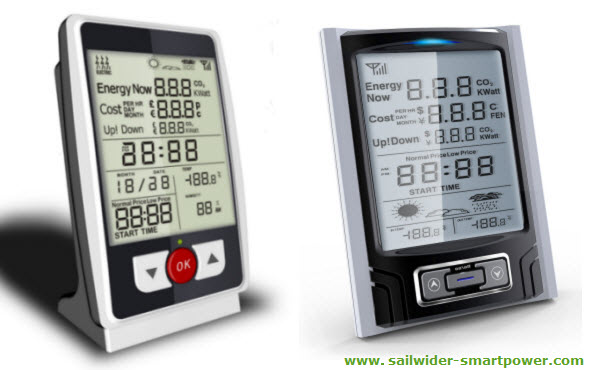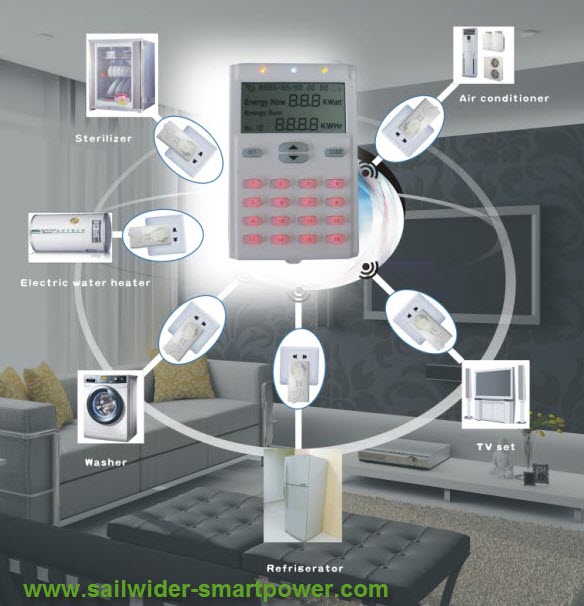|
To get kilowatt-hours, take the wattage of the device, multiply by the number of hours you use it, and divide by 1000. (Dividing by 1000 changes it from watt-hours to kilowatt-hours.) That's exactly what
was done in the table above.
Here's the formula to figure the cost of running a device:
Cost of electricity = (wattage *
hours used) * price per KWh /
1000
For example, let's say you leave a 100-watt bulb running continuously (730 hours a month), and you're paying 15
cents ($0.15) per kWh. Your cost to run the bulb all month is:
100-watt x 730
hours * $0.15 per kWh / 1000= $10.95.
If your device doesn't list wattage, but it does list amps, then just multiply the amps times the voltage to get the watts. For example:
2.5 amps x 120 volts = 300 watts
(If you're outside North America, your country probably uses 220 to 240 volts instead of 120.)
You can't always trust the wattage printed on the device, because many devices don't use the full listed wattage all the time. For example, the compressor in a refrigerator doesn't run constantly, only sometimes, so you can't go by the listed wattage for a fridge.
watts vs. watt-hours
watt and watt-hour cannot be
compared. Watts are a unit
of power, which is to say
the rate of energy being
used every second. Watt
hours are a unit of energy.
Watt hours are often used
because it is a meaningful
way of charging people for
electricity. Electric bills
are charged per kWh. With
regard to generating
electricity, 200Wh would be
a total amount of energy
generated, but 200W would be
200J every second - the
total would have to be
calculated by multiplying
the 200W by the time in
hours the generator is
running for.
Many people get confused
about the difference between
watts and
watt-hours. Here's the
difference:
-
Watts is the rate
of use at this
instant.
-
Watt-hours is the
total energy used over
time.
Here's a question frequently
asked, which makes no sense:
"You say that some
device uses 100 watts.
What period of time is
that for?"
It's not for any period of
time, because watts is a
rate at that instant.
One might as well ask:
"The speedometer in my
car says I'm going 35
miles an hour. What
period of time is that
for?"
It's not for any period of
time. You're going 35 miles
an hour at that instant.
The difference is:
-
We use watts to
see how hungry a device
is for power. (e.g.,
100-watt bulb is twice
as hungry as a 50-watt
bulb.)
-
We use watt-hours
to see how much
electricity we actually
used over a period of
time.
So, just multiply the
watts times the hours
used to get the
watt-hours, then divide it
by 1000 to get the
kilowatt-hours, which is how
the power suppliers charge
the bill. Example: 100-watt
bulb x 2 hours / 1000 = 0.2
kWh.
How much does electricity
cost?
The cost of electricity depends on where you live, how much you use, and possibly when you use it. The electric company measures how much electricity you use in kilowatt-hours, abbreviated kWh. Your bill might have multiple charges per kWh (different
charges per-kWh) and you have to add them all up to get the total cost per kWh.
Electricity rates vary widely.
The rates may vary even from the
same provider. The only way to
know what you're actually paying
is to check your bill carefully.
The average cost of residential electricity was 12cents
per kWh in the U.S. in April
2009, and ranged from 7cents per
kWh in North Dakota to 26cents
per kWh in Hawaii (from the DoE,
which also has historical
rates). But average rates are
misleading, because most utility
rates are tiered, meaning that
excessive use is billed at a
higher rate. This is important
because your savings are also
figured for the highest tier
you're in. For example, let's
say you pay 9cents per kWh for
the first 500 kWh, and then
16cents per kWh for use above
that. If you normally use 900
kWh a month, then every kWh you
save reduces your bill by
16cents. Because savings happen
at the highest-billed tier,
those writing about saving
electricity generally should not
use the average rate, since the
savings rate will usually be
higher.
Electricity Usage Monitors
The basic figures contained
within a monthly or quarterly
electricity bill do not give you
much information as to where
your electricity is going - they
just tell you how much you have
used in total during that period
and how much totally you need to
pay. Therefore it is well worth
considering purchasing an
electricity usage monitor and
using it to see exactly where
all your hard-earned money is
going.
One great way to find out how
much electricity each of your
household appliances and
electronic devices uses is with
a wireless electricity
power/energy monitor, which
shows you in real time exactly
how much money your total home
or office electricity usage is
costing you. These monitors can
help you reduce your electricity
consumption by as much as 20%
simply by showing you what you
are using.
Sailwider-SmartPower is a
developer and manufacturer of
electricity power monitor and
controlling system.

Most electricity energy monitors
in the market are uni-directional
(1-way) only, that means you can
only get energy consumption
information from the monitor.
The
bi-directional (2-way)
electricity power monitoring and
control system
from Sailwider-SmartPower makes
the user not only able to
monitor the electricity usage,
but also can easily remote
control the connected electrical
appliances wirelessly, providing
great convenience to electricity
efficiency management.
 |


